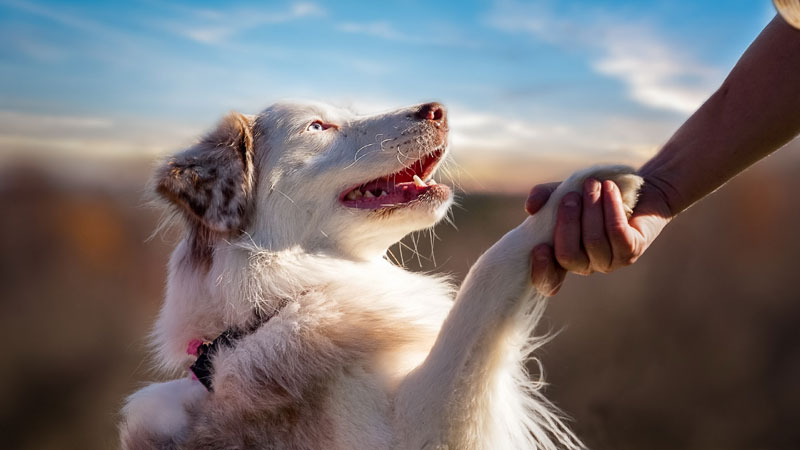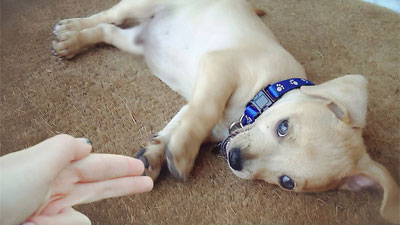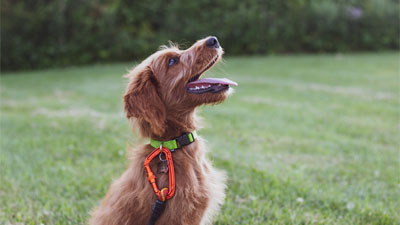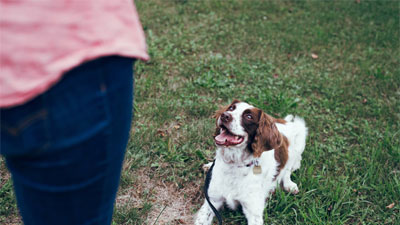- Size
- Smallest
- Small
- Small to Medium
- Medium
- Large
- Giant
- Characteristics
- Smartest
- Hypoallergenic
- Fluffy
- Best Guard
- Best Family
- Best for Kids
- Low Shedding
- Healthiest
- Police Dogs
- Most Calm
- Quietest
- Color
- White
- Black
- Grey
- Brown
- Blue
- Red
- Coat
- Hairless
- Short
- Long
- Origin
- Japan
- China
- Australia
- Germany
- Italy
- United States
- France
- Group
- Hound
- Terrier
- Herding
- Toy
- Working
- Sporting
Teaching Your Dog the Classic Trick: Shake Hands

The "shake" trick is a classic and endearing way for your dog to greet new people, showcasing their friendly demeanor and adding a touch of charm to their interactions. Not only is it a fun trick that can amuse and impress friends and family, but it's also a polite way for your dog to make new acquaintances. The key to successfully teaching your dog to shake hands lies in patience, positive reinforcement, and a step-by-step approach that builds enthusiasm and understanding.
In this article, we will explore the benefits of teaching your dog to shake hands, step-by-step instructions on how to train them, common challenges you may encounter, and additional tips to ensure success.
The Benefits of Teaching Your Dog to Shake Hands
There are numerous benefits to teaching your dog to shake hands or paws with your friends. Let's delve into a few of them:
Socialization: Dogs that are well-socialized and friendly are more likely to be accepted by people and other animals. By teaching your dog to shake hands, you are helping them become more comfortable around new people and enhancing their socialization skills.
Polite Greetings: A dog that greets your friends by shaking hands is demonstrating good manners and respect. It sets a positive tone for the interaction and shows that your dog is well-behaved and trustworthy. This can make your friends feel more at ease around your canine companion.
Bonding and Mental Stimulation: The training process involved in teaching your dog to shake hands creates a stronger bond between you and your furry friend. It promotes mental stimulation, as your dog learns new commands and eagerly performs them to earn rewards.
Now that we understand the benefits, let's dive into the step-by-step process of teaching your dog to shake hands.
Step-by-Step Guide to Teaching Your Dog to Shake Hands
1. Start with Basic Training:
Before proceeding to teach your dog to shake hands, it's essential to ensure they have a solid foundation in basic obedience commands such as sit and stay. These commands set the groundwork for more advanced tricks like shake hands.
2. Choose the Right Rewards:
Gather high-value treats that your dog finds irresistible. These treats will serve as motivation and rewards during the training process. Alternatively, you can use a clicker if your dog is already familiar with clicker training.
3. Get Your Dog into the Sitting Position:
Begin each training session by having your dog sit in front of you. This is the starting point for teaching them to offer their paw for a handshake.
4. Present Your Hand:
Extend your hand, palm facing up, towards your dog. Your hand should be at a height that is accessible to your dog.
5. Wait for Action:
Give your dog a moment to figure out what you want. Most dogs will naturally start sniffing your hand or pawing at it. As soon as your dog lifts their paw or makes any move resembling a handshake, praise them with a positive marker word like "yes" or use the clicker, and immediately reward them with a treat.
6. Repeat and Reinforce:
Practice this step consistently, repeating the process until your dog consistently lifts their paw when presented with your hand. Remember to reward and praise them each time they offer the behavior you are looking for.
7. Introduce the Cue Word:
Once your dog is consistently pawing at your hand, it's time to introduce a verbal cue word. Choose a simple word like "shake" or "paw." Say the cue word just as you present your hand. This helps your dog associate the cue word with the desired behavior.
8. Practice with the Cue Word:
As you continue the training, reinforce the behavior by repeating the cue word each time your dog lifts their paw. Ensure precise timing when giving the cue word to create a connection between the cue and the action.
9. Gradually Remove the Hand Prompt:
Over time, start reducing the visual cue of your hand, so your dog learns to respond to the verbal cue alone. Eventually, your dog should respond to the verbal cue without needing to see your hand extended.
10. Generalize the Behavior:
Practice the shake hands trick in various locations and with different people. This helps your dog generalize the behavior and understand that shaking hands applies to any friendly person, not just you.
Common Challenges and How to Overcome Them
During the training process, you may encounter some challenges. Here are a few common ones and tips to overcome them:
Lack of Response: Some dogs may not understand what you want initially or may not show interest in shaking hands. In such cases, try using a higher-value treat or a different reward that motivates them. You can also utilize their favorite toy instead of treats.
Overexcitement or Impatience: If your dog becomes overly excited or impatient during training, redirect their energy by incorporating short breaks or engaging in other obedience exercises before attempting the handshake trick again. Calmness is key for success.
Fear or Anxiety: Some dogs may display fear or anxiety when attempting to shake hands. If this happens, take things slow and create a positive association. Gradually desensitize your dog to the fearful stimuli by rewarding small steps towards the behavior, and never force them to shake hands if they exhibit signs of discomfort.
Remember, patience, consistency, and positive reinforcement are vital throughout the training process. Tailor the training sessions to your dog's specific needs and abilities, and always end on a positive note.
Additional Tips for Success
While the step-by-step guide provides a solid foundation, here are a few additional tips that can further enhance your training experience:
Keep Training Sessions Short: Dogs have short attention spans, so keep training sessions to around 10-15 minutes to maintain their focus and prevent boredom.
Be Consistent: Consistency is crucial when teaching your dog any trick. Use the same cues, reward systems, and training techniques throughout the process.
Practice in Different Environments: Gradually introduce distractions by practicing the shake hands trick in different locations, both indoors and outdoors. This helps your dog generalize the behavior and maintain their responsiveness in various scenarios.
Vary the Rewards: While treats are a common reward, it's essential to mix up the rewards to prevent your dog from becoming solely food-focused. Incorporate verbal praise, petting, and playtime as rewards to keep the training exciting and reinforce good behavior.
Build on Success: Once your dog has mastered shaking hands with one paw, you can introduce the trick with the other paw. Practice the same steps while using the opposite hand as the target. This enables your dog to shake hands with either paw, providing a more versatile and impressive greeting.
Conclusion
Teaching your dog to greet your friends by shaking hands is an endearing and practical trick that showcases their social skills and polite manners. By following the step-by-step guide, being patient, and using positive reinforcement, you can foster a strong bond with your furry friend while impressing your friends and family.
Remember that training should always be a positive experience for both you and your dog. It is a journey of learning and growth that will strengthen your relationship and create many memorable moments with your beloved canine companion. So, unleash your inner dog trainer, grab those treats, and start shaping those paw-shaking skills today!
You May Also Like
 Dog Training TipsTrain Your Dog to Play Dead: A Step-by-Step Guide
Dog Training TipsTrain Your Dog to Play Dead: A Step-by-Step Guide Dog Training TipsTrain Your Dog to Roll Over: A Step-by-Step Guide
Dog Training TipsTrain Your Dog to Roll Over: A Step-by-Step Guide Dog Training TipsTeaching Your Dog the "Sitting Pretty" or "Beg" Trick
Dog Training TipsTeaching Your Dog the "Sitting Pretty" or "Beg" Trick Dog Training TipsTraining Your Dog to Spin: A Step-by-Step Guide
Dog Training TipsTraining Your Dog to Spin: A Step-by-Step Guide Dog Training TipsTeaching Your Dog How to Back Up: Step-by-Step Guide
Dog Training TipsTeaching Your Dog How to Back Up: Step-by-Step Guide Dog Training TipsTeaching Your Dog to Speak: A Comprehensive Guide
Dog Training TipsTeaching Your Dog to Speak: A Comprehensive Guide